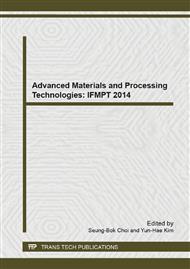p.767
p.773
p.777
p.781
p.787
p.794
p.798
p.805
p.810
Theoretical Simulation of the Temperature Increasing Induced by the Friction between Cotton Packages and Iron Floor during the Transportation by Train
Abstract:
The purpose of this study is to investigate the fire possibility of the cotton packages by the friction heating during the transportation by train. Theoretical simulation was conducted for the friction heating with a typical amplitude and frequency. The results suggest that the hot point induced by the sliding friction between the iron string joints around the package and the iron floor is the heat source for the heat transfer progress. It is also illustrated that the calculated temperatures on the surface of cotton package near the friction point are still a little lower that the rapid pyrolysis temperature of cotton material in a rather worse situation. However, more and more heat may accumulate inside the cotton package if there is a long-time heating for it. The smoldering of the cotton packages may still happen and turn into a cotton fire in train when there are also some other factors at the same time.
Info:
Periodical:
Pages:
787-793
Citation:
Online since:
February 2014
Authors:
Keywords:
Price:
Сopyright:
© 2014 Trans Tech Publications Ltd. All Rights Reserved
Share:
Citation:


